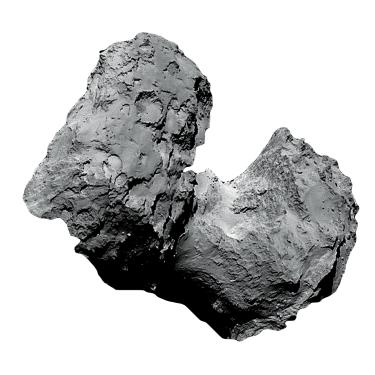Why some comets break up, then make up

“Some comets are like couples—they break up, but then they get back together down the road,” says Distinguished Professor Daniel Scheeres of the Ann and H.J. Smead Department of Aerospace Engineering Sciences. Scheeres teamed up with colleagues from CU Boulder, Purdue University and several other institutions to discover that the bodies of some comets that orbit the sun may split and reunite in a repeating process fundamental to comet evolution.
The team studied a rubber duck-shaped comet known as 67P that has two cracks, each longer than a football field, on a neck that connects its two large lobes. The team used numerical models to show that when the comet spun fast enough —comets can spin up or spin down for various reasons—it increased stress and the crack sizes enough to pop the head off. But the models show the head and body can’t escape each other. In weeks, days, or even hours, they will come together again, creating a new comet nucleus.
Principal Investigator:
Daniel Scheeres
Funding:
National Aeronautics and Space Administration (NASA)
Collaboration/Support:
Jay McMahon; Ann and H.J. Smead Aerospace Engineering Sciences; Purdue University

